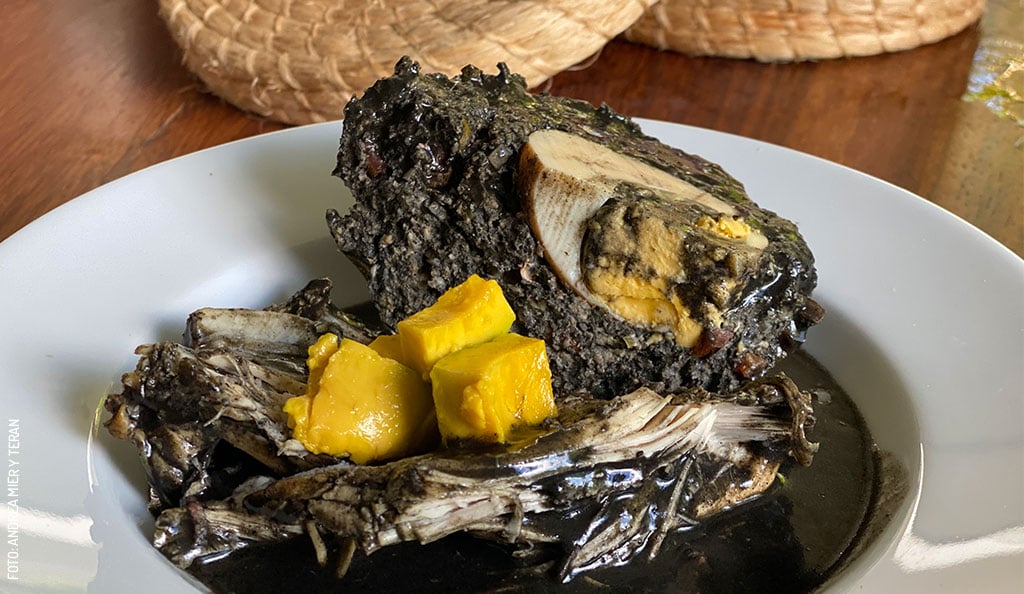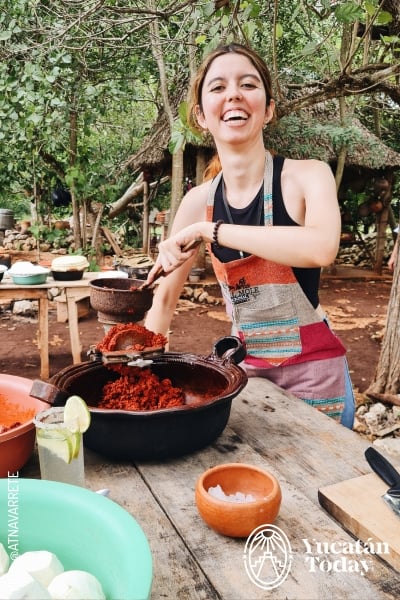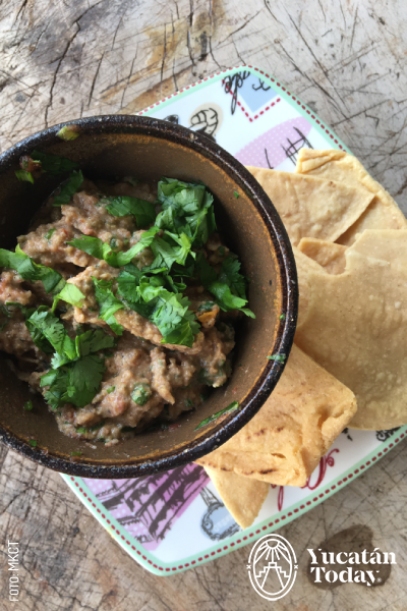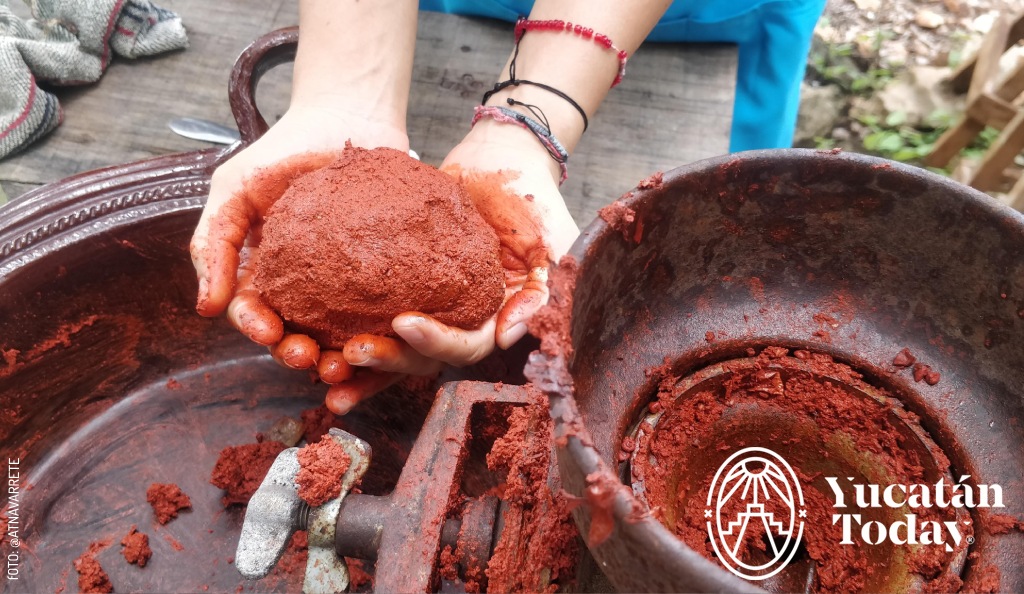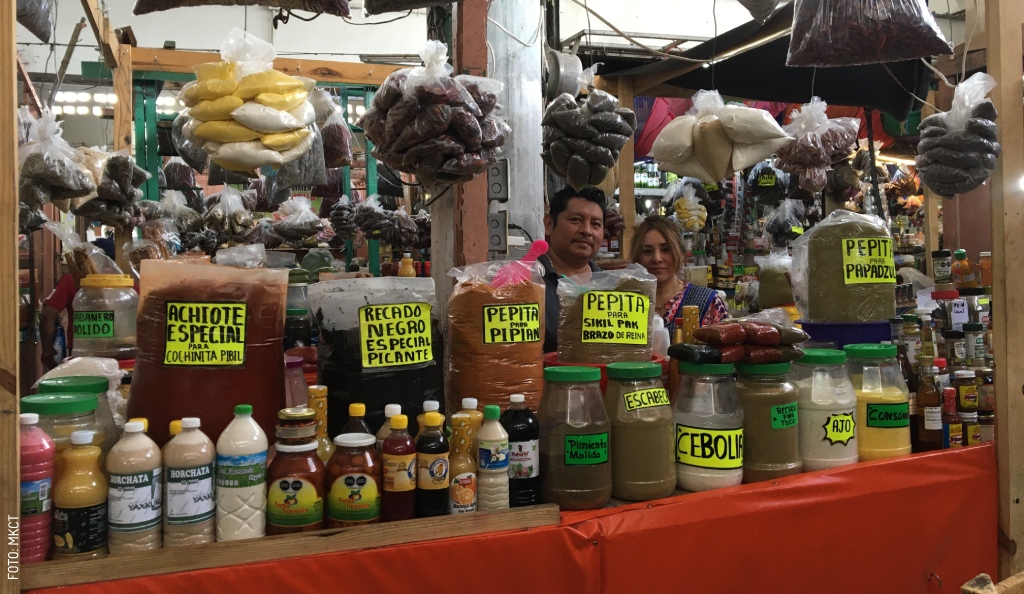
The Mystic World of Recados (Yucatecan Seasonings)
The best way to discover a new place isn’t only about walking down its streets and seeing some sights: trying the local food is also a must. In that sense, Yucatán has plenty to offer visitors, not only because of the region’s outstanding flavors, but also because of all the culture and history behind them. Recados (Yucatecan seasonings) perfectly embody all these aspects.
There is no accurate record of exactly why in Yucatán certain spice combinations are called “Recados;” the word itself in Spanish usually means “message” or “errand.” Some say it’s a deformation of the word “recaudo,” which means “to collect,” but others simply define it as a group of spices and ingredients ground together into a powder or paste.
In the 16th century, Christopher Columbus went looking for a route that would give Europe direct access to the lucrative spice market. Instead, he came across a new continent, where great cultures, knowledge, development, and cuisine thrived. Ironically, this discovery, the conquest, and then colonization, ended up leaving us with, among other things, the wealth that the East promised: spices. The Yucatán Península inhabitants took, adapted, and merged this wealth with their own ingredients and preparations to infuse flavor, aroma, and color to dishes that would become the most iconic in our cuisine.
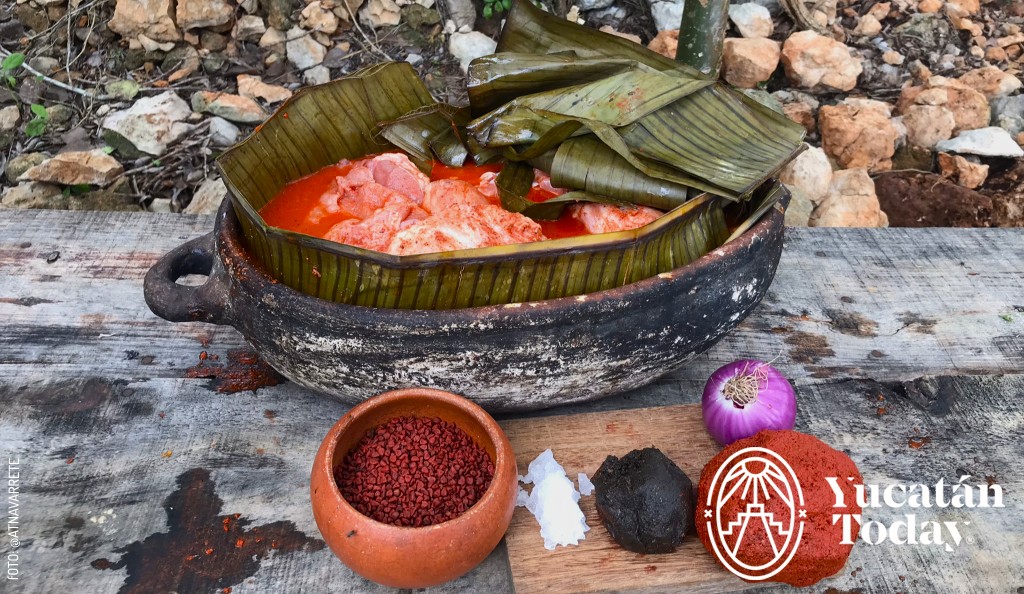
As you’d expect, this fusion gave way to a wide variety of Recados that are virtually impossible to standardize; as such, you’ll find infinite versions of both ingredients and instructions to make the same Recados. Because this is a (partly pre-Hispanic) cultural legacy, it changes from family with family; as it happens with most dishes, it all depends of each individual’s taste and personal touch. That’s why you’ll find Recados with varying proportions of ingredients, and even substitutions and/or omissions.
Perhaps that’s why there’s also an infinite number of places where you can try and buy different Recados, as well as buy the ingredients to make your own. Here’s a closer look at some of them.
Types of Recado in Yucatán
Recado Negro (Black Recado)
The most time-consuming and mysterious of all; and I mean mysterious because, if you have no clue what it is, its color might mislead you into a wide array of possible explanations: Corn smut? Firewood ash? Charcoal? Burnt tortillas? All wrong. It’s actually Chawa Iik pepper (although usually substituted for the even spicier Chile de Árbol) dried, toasted, and burnt, then soaked in water for two to three days, to then be ground with black pepper and allspice, clove, bay leaves, oregano, onion, garlic, and salt. In the end, you get a shiny black paste.
Recado Negro is believed to be the one with the most anciently traced Maya roots and a strong ritual meaning; it’s used in dishes such as Relleno Negro, Chilmole, and Boox K’óol.
Recado Rojo (Red Recado)
A classic; the most widely known, which most people have tried through Cochinita Pibil, its global flavor ambassador. Its main ingredients are the annatto (Achiote) seeds that, having been soaked for 24 hours, are ground with oregano, black pepper, cloves, garlic, cinnamon, bay leaves, bitter orange juice, and salt. It’s also used to make Mukbilpollo, Tikin Xik, and Pollo Pibil.
Recado Blanco (White Recado)
It is made with oregano, black pepper, allspice, clove, cumin, and cinnamon, in addition to three ingredients that give it an outstanding flavor and consistency: roasted onion and garlic, and bitter orange. Everything is ground together to a grayish paste that you can savor in dishes such as Relleno Blanco and Puchero; some people like it so much, they use it as “Recado para Todo (all-purpose seasoning).”
Recado para Todo (All-purpose seasoning, or Recado for everything)
Just like Indian cuisine with curry and French cuisine with Mirepoix, Yucatecan cuisine has made Recado para Todo a core component of everyday life: it’s literally used for everything! It’s a dry mix that incorporates black pepper, garlic, cinnamon, clove, oregano, cumin, and bay leaves, among other herbs. Like every other Recado on this list, it’s prepared according to the taste and tradition of whoever is making or selling it. It’s used to season broths or as a marinade or rub for meat; you may have tasted it in Poc Chuc, Sopa de Lima, Escabeche, chicken breasts, and fish broth, among many, many others.
Recado Verde (Green Recado)
After corn, squash is the most important vegetable in the Milpa or Yucatecan fields, as they were grown way before the Spaniards arrived; that’s why its use is so widespread in pre-Hispanic cuisine. Seeds are believed to be the starting point for its domestication, because of how durable and nutritious they are. That way, this precious seeds may have become the main ingredient for preparations such as Recado Verde, which is made with big, thick Pepita, the seeds of a squash that resembles a round watermelon. The seeds are washed and dried, then peeled, toasted, and ground with epazote and salt to form a green paste. The best known dish made with this Recado is Papadzules, but it can also be used to make Pozole Verde and Pipián Verde.Pepita menuda or Xmejen K’úum (Small Pepita)
This small, tender Pepita is toasted once it’s dried, and then ground unpeeled with a bit of salt. It’s used to prepare Sikil P’aak, Brazo de Reina (Queen’s Arm), Dzotobichay, Tóoksel, and the bread used for the Cha’a Cháak and Wajil Kool ceremonies, among others.
More Recados
Pipián Rojo (red Pipián): Some people use the same Pepita used in Recado Verde; others, the small, unpeeled Pepita. Whichever you choose, you mix with annatto, oregano, epazote, garlic, and onion. This Recado is mainly used to make deer Pipián.
Alcaparrado: A mix of black pepper, garlic, oregano, cumin, cinnamon, clove, cilantro seeds, and white vinegar.
Some recommendations
Outside of Mérida especially, people make their own Recados to use immediately. In Mérida, you’ll find the most variety at most markets; market-bought Recados have a shelf life of about three months at room temperature to up to a year if refrigerated.
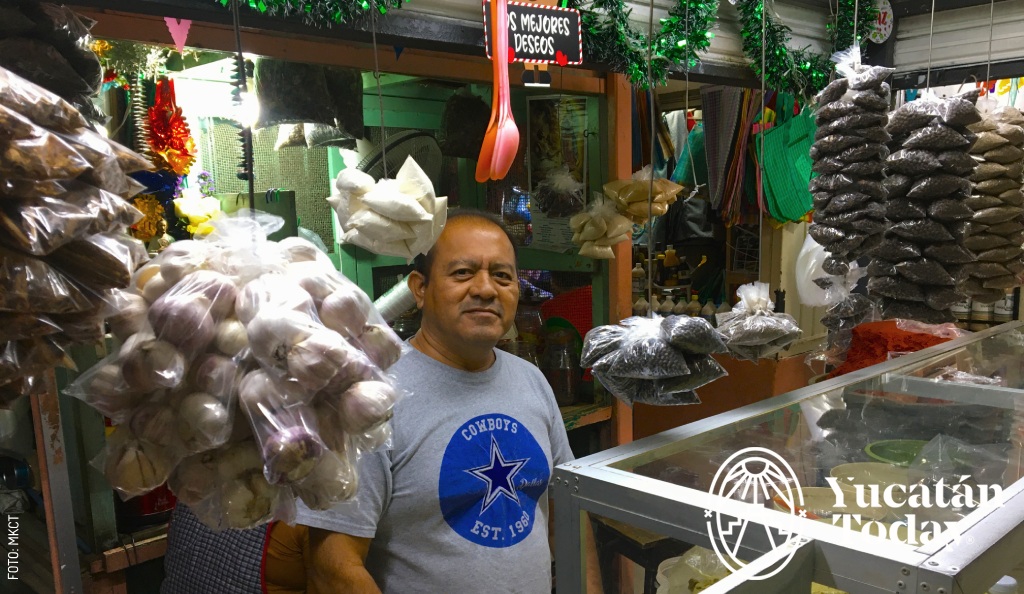 If you’re shopping for Recados for the first time, it’s a good idea to ask your vendors about their ingredients and origin; villages like Holcá, Peto, Chichimilá. Tixcacal Opichén, Muna, Sotuta, and Kinchil are renowned for the quality of their Recados and the ingredients to make them. You can ask to try recados, and you’ll find that many vendors, confident in their products, will offer to let you taste them; don’t be shy about sampling them! That’s the only way to know if the taste is what you’re looking for.
If you’re shopping for Recados for the first time, it’s a good idea to ask your vendors about their ingredients and origin; villages like Holcá, Peto, Chichimilá. Tixcacal Opichén, Muna, Sotuta, and Kinchil are renowned for the quality of their Recados and the ingredients to make them. You can ask to try recados, and you’ll find that many vendors, confident in their products, will offer to let you taste them; don’t be shy about sampling them! That’s the only way to know if the taste is what you’re looking for.
Are you visiting and hoping to take home a taste of Yucatán? Check out Ralf’s tips for transporting Recados, as there’s always the risk of having them confiscated. But not all is lost; there are plenty of vendors who deliver throughout México, the United States, and Canada. Check out the directory at the end of this article. You now have a clearer understanding of what Yucatecan seasonings are, what’s in them, what they’re used for, where to buy them, and where to try them. But don’t get too cocky; as long as creativity exists, cuisine continues to constantly evolve, and with it, so do Recados: you can now find different Recados in Atole, pastor, ice cream, pastries, chilaquiles, ceviche, and chorizo.
Vendors who offer shipping
Francisco Escamilla, Lucas de Gálvez market
Local 64 y 73
WA: 999 149 2673
Martín Castañeda, San Benito market
Local 32, 33 y 34
Tel: 999 917 1171
Condimentos Enrique, Santiago market
WA: 999 194 6239
La Yucateca, seasonings and Recados, Lucas de Gálvez market
FB: La Yucateca Condimentos y Recados
WA: 999 392 2498
Restaurants
La Casta Divina
Calle 59 #468 x 53 y 55, Centro, Mérida
FB: La Casta Divina
Restaurante Hacienda Teya Santa Lucía
Calle 60 #468 x 53 y 55, Centro, Mérida
IG: teyasantalucia
Hacienda Teya
Carr. Mérida - Cancún Km 12, Mérida
FB: Hacienda Teya
Yucatecan cuisine workshops (make your own Recado)
Yá axche, Centro etnogastronómico
C. 18, La Soledad, Halachó, Yuc.
Tuuch Kaaj
C. 31 entre 22 y 24, 97850 Maní, Yuc.
FB: Utuuchkaaj
Los Dos Cooking School
C. 68 517, Los Cocos, Mérida, Yuc.
Photography by MKCT, and Alicia Navarrete for use in Yucatán Today.

Author: Magali Ramírez D.
Graphic Communicator. Food lover. Inveterate adventurer. Athlete by conviction and extreme out of restlessness. I discover, I get surprised and I learn through the life stories that we all have to tell.
Receive the latest articles and much more from the best of Yucatán in your email!
Related articles
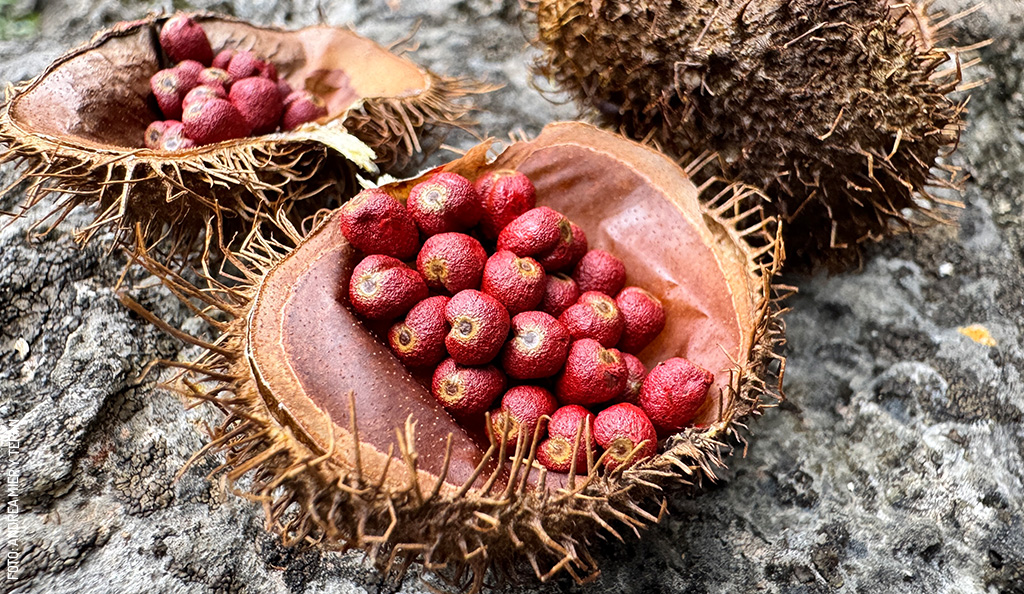
Achiote (Annatto), From the Tree to Your Table
Achiote (k'uxub) / Anatto seeds: Essential red seasoning (recado rojo) of Mayan Yucatecan cuisine. Flavor, color, and ancestral legacy for...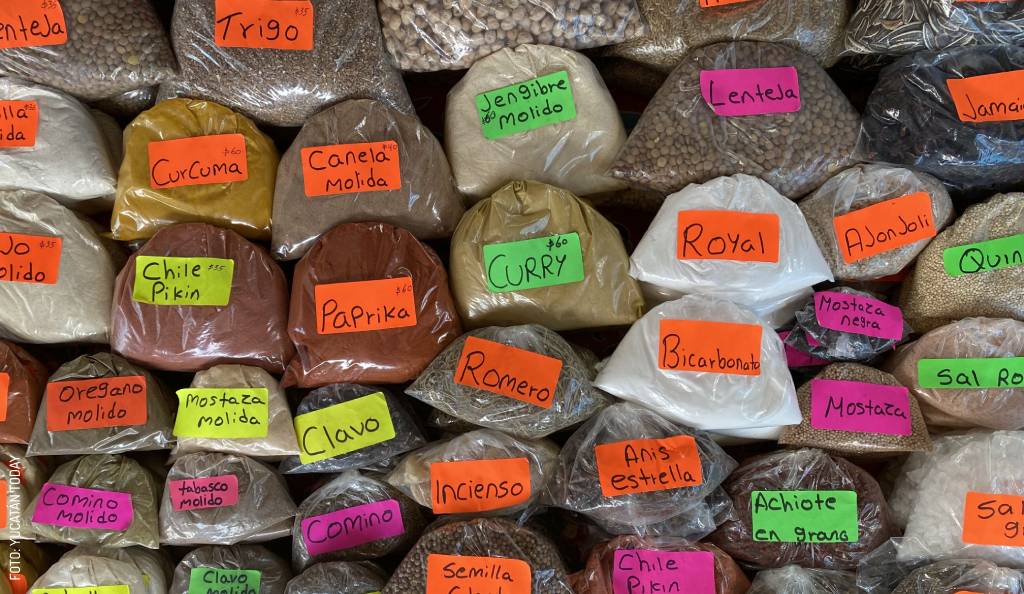
Spice up Your Life With Yucatán’s Flavorful Recados
There is something magical and unique about Yucatecan cuisine, but when it comes to home-style cooking in Yucatán, Recados are king